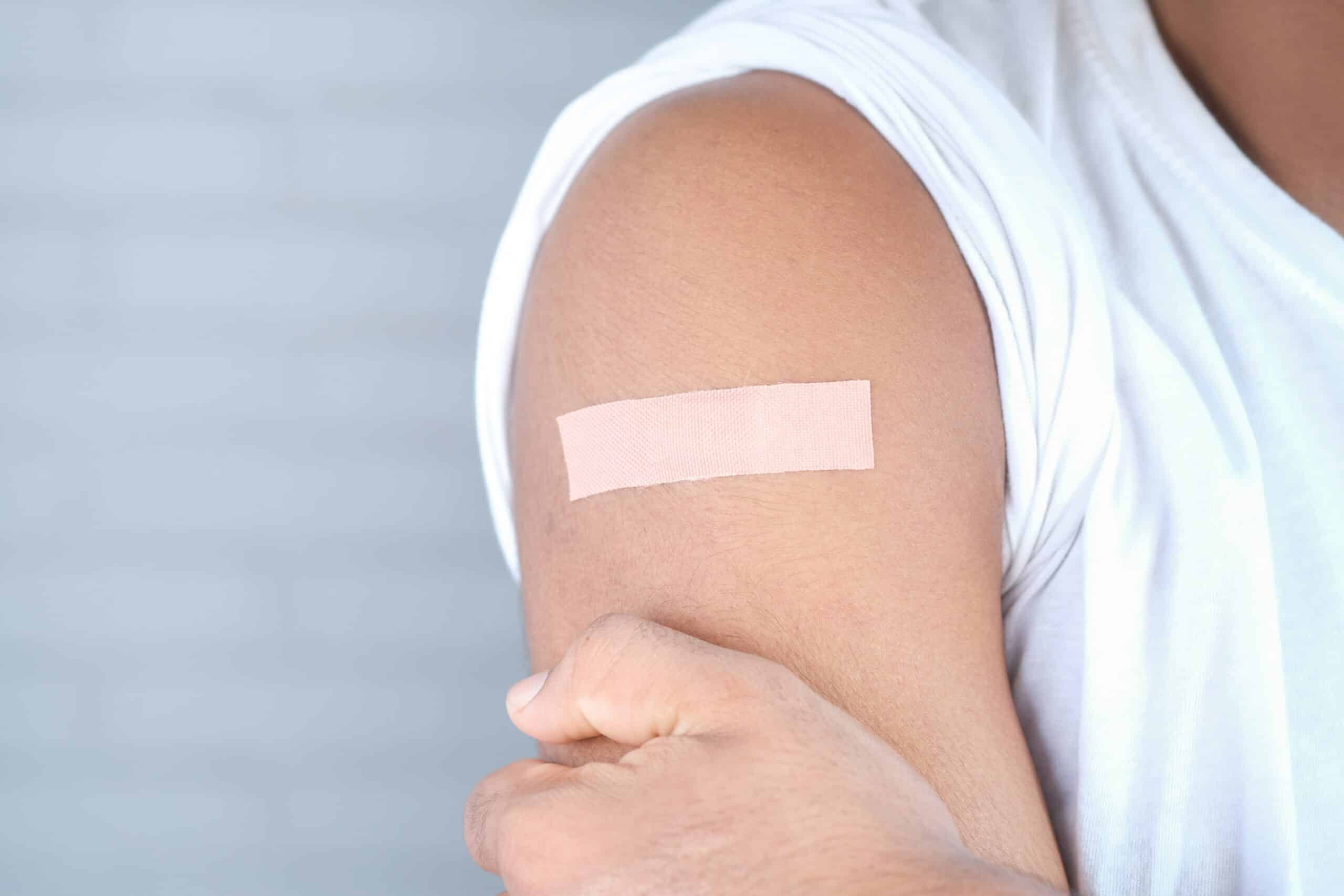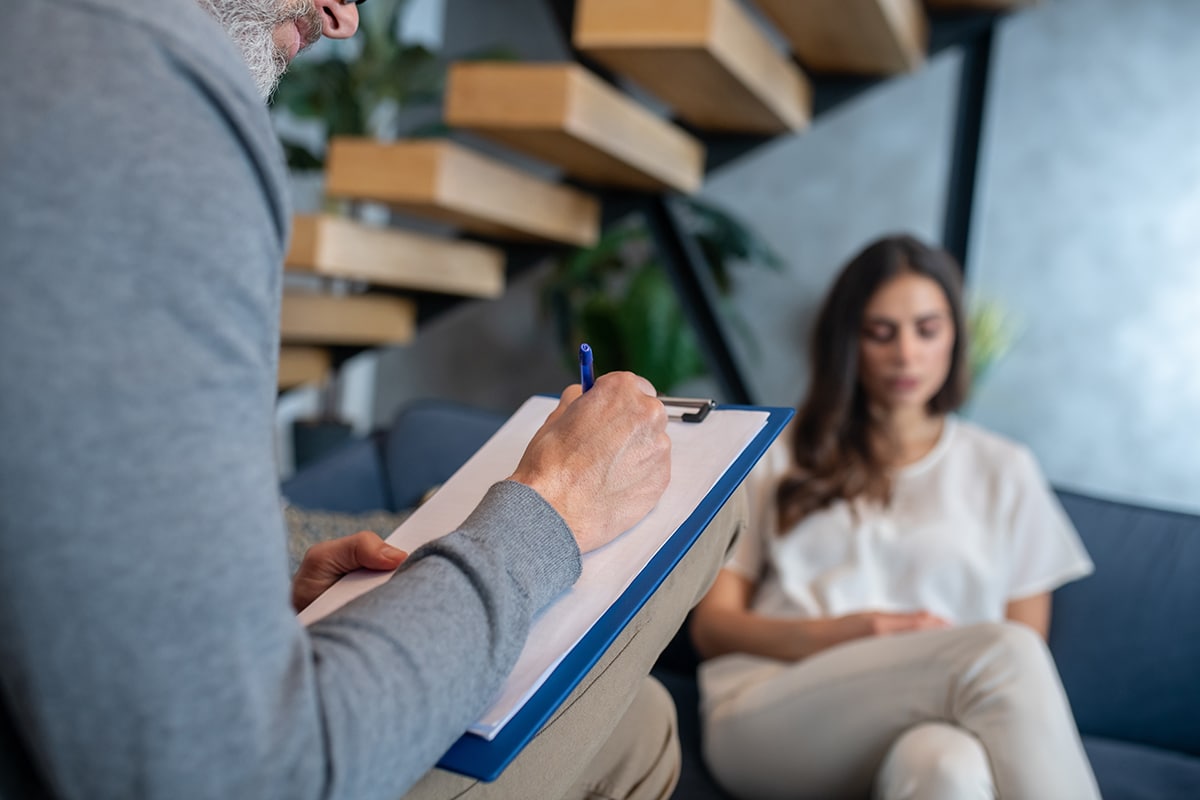Noticing changes in someone you care about can be unsettling, especially when you’re not sure what those changes mean. Track marks are one of the more visible signs of heroin use, but they don’t always look the way people expect. Some marks are obvious while others are small, faded, or easy to overlook. Understanding what track marks look like, why they form, and what other signs often show up alongside them can help you recognize early concerns and get support sooner.
What Are Track Marks?
Track marks are small scars, bruises, or irritated spots that form when someone repeatedly injects heroin or another drug into their veins. Over time, using the same areas breaks down the skin and vein, which leads to marks that become more noticeable and harder to heal.
Why They Appear on the Arms
The arms are the most common location for injection because the veins are easy to reach and tend to be more visible. However, people who want to hide their use may switch to other areas once their arms show irritation or scarring.
Are Track Marks Always Indicative of Drug Use?
Track marks can look similar to other skin issues that have nothing to do with drug use. Medical conditions, frequent blood draws, allergies, and certain skin disorders can all leave marks that resemble injection sites. Even minor injuries or irritation from scratching can create small punctures or bruises that look concerning at first glance. What matters most is the overall pattern. When marks appear repeatedly along a vein or heal slowly over time, that’s when they’re more likely to signal something deeper.
What Drugs Leave Track Marks?
While track marks aren’t always a sign of drug use, they certainly can be an indicator. Track marks can form from injecting several different substances, not only heroin. Any drug that is used intravenously has the potential to damage the skin and veins, especially with repeated use.
If you’re trying to understand what might be causing visible marks, here are the most common drugs linked to injection-related skin changes:
- Heroin
- Fentanyl
- Morphine
- Hydromorphone
- Methamphetamine
- Cocaine
- Crack cocaine
- Synthetic opioid
- Synthetic stimulants
- Misused prescription medications
What Do Track Marks Look Like?
Track marks can look different from person to person. Some signs develop quickly while others build up over time. If you’re concerned, here are some common changes to look for:
- Small puncture marks that appear in the same areas
- Scabs or circular wounds that heal slowly
- Thin, dark lines along a vein that resemble bruising
- Redness or irritation that keeps returning in specific spots
- Hardened or raised skin from repeated injections
- Unexplained bruises around veins
- Slight discoloration along the inner arm
Other Areas Track Marks May Show Up
Once arm veins become damaged or too painful, a person may begin injecting in less visible places. This can make the marks harder to recognize. Track marks may also appear on:
- The thighs
- The hands or feet
- The wrists or ankles
- The groin area
- The abdomen
These areas often show similar signs of punctures, bruising, or irritation, but they may be covered by clothing and harder to detect.
Skin Infections Linked to Injection Use
Repeated injections increase the risk of skin infections. These problems don’t always happen right away, but they are common among people who inject heroin.
Signs may include:
- Painful swelling under the skin
- Warm or tender spots that feel firm
- Areas filled with fluid or pus
- Red streaks spreading outward from a wound
These symptoms can signal serious infections that need immediate medical care.
Signs Track Marks May Be Related to Drug Use
Not every bruise or mark on the skin points to drug use, but there are certain patterns that stand out when injections are happening regularly. These signs often show up together and can help you understand whether what you’re seeing is part of a larger concern. The goal isn’t to diagnose or jump to conclusions. It’s to give you a clearer way to interpret changes that are hard to ignore.
Repeated Marks in the Same Areas
Marks that keep appearing in the same spots are often tied to injection use. When someone uses the same vein repeatedly, the skin doesn’t have time to heal, which leads to clusters of small punctures or areas of hardened skin along a single vein.
Slow-Healing Wounds
Injection sites tend to heal much more slowly than everyday scrapes or bruises. The skin may stay irritated or scabbed for longer periods because the same area is being used again before it can fully recover.
Unusual Bruising Along Veins
Bruising connected to injection use often follows the natural line of a vein. Instead of forming a round or irregular patch, the bruise may look like a thin line or streak that mirrors the vein underneath the skin.
Marks That Don’t Match Daily Activities
Track marks often stand out because they don’t fit with the person’s usual routines. Someone who doesn’t engage in physical tasks or sports may suddenly have repeated skin irritation or discoloration in places that are hard to explain through normal activity.
Efforts to Keep the Skin Hidden
A noticeable change in how someone dresses or moves can also signal concern. They may start wearing long sleeves in warm weather, avoid raising their arms, or pull away from situations where their skin might be seen. This shift often reflects fear of someone noticing the marks.
How People Try to Cover Track Marks
People who inject heroin often feel ashamed or afraid of being judged, so they may try to hide marks on their skin. This can make the signs harder to spot, especially if the person becomes more private or guarded about their appearance.
Common ways people cover track marks include:
- Wearing long sleeves in warm weather
- Using makeup to hide redness or scarring
- Keeping their arms folded or out of sight
- Wearing accessories that cover the wrists or forearms
- Avoiding situations where their skin might be seen
How to Approach Someone If You’re Concerned
Talking to someone about possible heroin use can feel overwhelming. You may worry about saying the wrong thing, making them defensive, or damaging your relationship. Approaching the conversation with care helps create safety, which gives the person a better chance of opening up. These steps work together as one larger approach: staying grounded, speaking with compassion, and helping them feel supported rather than judged.
Start With Care Instead of Accusation
A compassionate opening sets the tone for the entire conversation. When someone feels accused, they usually shut down or become defensive. When they feel cared for, they’re more likely to listen. You don’t have to have proof or certainty. You only need to share what you’ve noticed and why you’re concerned. This keeps the focus on your relationship instead of putting them on trial.
Here are ways to start the conversation from a place of care:
- Use “I” statements that express concern rather than blame
- Focus on the changes you’ve observed without making assumptions
- Speak calmly and keep your tone steady
- Let them know you’re coming from a place of support
- Keep your body language open by sitting or standing nearby rather than hovering or pacing
Be Specific About What You’ve Noticed
General statements like “You’ve changed” can feel vague and confusing. Specific observations help the person understand what you’re reacting to without feeling attacked. This also reduces the chance that the conversation turns into an argument about what is or isn’t happening. You’re not trying to catch them in a lie. You’re giving them something concrete to respond to, which can lower their defensiveness and help them reflect.
You can do this in simple, grounded ways:
- Mention a pattern you’ve seen without attaching judgment
- Point out behaviors that concern you rather than trying to interpret them
- Describe physical changes clearly and gently
- Use neutral language so it doesn’t feel loaded
- Stick to facts rather than assumptions or predictions
Listen More Than You Talk
Once you open the conversation, the most important step is to allow them space to respond. Listening shows that you respect their experience, even if you disagree with what they’re saying. People are more likely to share honestly when they feel heard rather than pressured. Active listening also helps you understand what they’re dealing with beneath the surface, which can guide what support they need moving forward.
Here are ways to make listening feel safe and supportive:
- Give them time to talk without interrupting
- Nod or offer small verbal cues that show you’re paying attention
- Ask open-ended questions that invite conversation
- Avoid rushing to fill silence because silence often helps people process
- Reflect back what you’ve heard so they feel understood
Stay Calm if They Deny or Minimize
A person may deny what’s happening, minimize their use, or get frustrated with the conversation. This is common and doesn’t mean you’ve made a mistake. In fact, it’s often part of the process. Staying steady helps prevent the conversation from escalating and shows that your care doesn’t disappear when things get uncomfortable. You’re modeling calmness, which helps keep the door open for future conversations.
You can stay grounded in moments of denial by:
- Keeping your tone steady even if they become emotional
- Reassuring them you’re not trying to shame or punish them
- Avoiding arguments and sticking to what you’ve observed
- Acknowledging that the conversation might be hard for both of you
- Letting them know you’ll be there whenever they’re ready to talk
Offer Support Instead of Solutions
You don’t need to fix everything or come up with a full plan on the spot. Most people respond better when they feel supported rather than instructed. Offering support shows that you’re on their side without forcing them into something they aren’t ready for. This helps build trust, which makes future steps—like seeking treatment or talking to a professional—much more likely.
Here are supportive ways to move the conversation forward:
- Ask how you can help instead of assuming they’ll be immediately willing to go to rehab for their heroin abuse
- Offer to sit with them while they explore treatment options
- Let them know they don’t have to handle the next steps alone
- Share resources gently instead of overwhelming them
- Remind them there’s no judgment and that support is available whenever they’re ready
Keep the Door Open for Future Conversations
Even if the person isn’t ready to talk now, your compassion makes it easier for them to come back later. Change rarely happens in one conversation. What matters most is that they know you care and that your support is consistent. When someone feels safe returning to you, it increases the chances they’ll reach out when they’re ready for help.
Here are ways to keep that connection open:
- End the conversation with reassurance rather than pressure
- Let them know they can come to you anytime
- Check in later in a gentle way without revisiting the topic immediately
- Maintain regular contact so the relationship stays strong
- Make sure they feel valued beyond this issue, not defined by it
Find Support When You’re Worried About Track Marks
Seeing changes in someone you care about can leave you feeling unsure, stressed, or afraid of what the signs might mean. You don’t have to sort through those worries alone. The right support can help you understand what you’re seeing and guide you toward safe, effective next steps.
At Northpoint Recovery, we provide evidence-based treatment for addiction to opioids like heroin and other substance use challenges. Our team helps people stabilize physically, address the emotional roots of addiction, and rebuild daily routines that support long-term recovery.
If you’re ready to reach out for yourself or someone you care about, we’re here to help you find a treatment plan that feels supportive and clear. Contact us today to get started.


